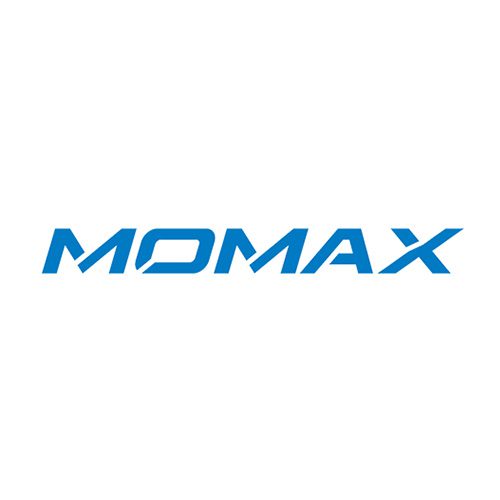Liquidity Providers: the Engine behind Market Efficiency
Content
We are a premium broker solutions provider, dedicated to delivering a wide array of innovative solutions and services that enable Forex brokers and financial institutions to minimize risk and maximize growth. Tier-1 banks, such as JP Morgan, Citi, and Barclays, provide deep liquidity and handle massive transaction volumes daily. All opinions, news, research, analysis, prices or other information is provided as general market commentary and not as investment advice and all potential results discussed are not guaranteed to be achieved. broker liquidity provider The information may have been derived from publicly available sources, company reports, personal research, or surveys.
Liquidity Providers in the Trading Industry
Their primary function is to ensure that there’s always a counterparty available for every trade. Whether your traders are buying or selling a currency pair, liquidity providers make sure there’s enough volume to facilitate that transaction seamlessly. Liquidity providers are integral to the trading industry, serving as the backbone of efficient and dynamic market operations. Brokers rely on these providers to access deep liquidity, competitive pricing, https://www.xcritical.com/ and reliable execution for their clients. With Brokeree’s Liquidity Bridge, brokers can efficiently connect and aggregate liquidity from multiple providers, enhancing their trading environment and offering superior services to their clients.
What Happens If a Market Is Illiquid?

FIA PTG member firms serve as a critical source of liquidity, allowing those who use the markets, including individual investors, to manage Stockbroker their risks and invest effectively. FIA PTG advocates for open access to markets, transparency, and data-driven policy. In summary, liquidity is essential for efficient functioning, risk management, and stability in financial markets. It’s a delicate balance—too much liquidity can lead to bubbles, while too little can cause crises.

Do they have multiple, quality sources of liquidity?
Traders should ensure that the platform they select offers high levels of liquidity for their desired asset class. IG is a good example of a broker that has a subsidiary liquidity provider, called IG Prime. Through my expertise, I strive to empower individuals with the knowledge and tools they need to navigate the exciting realm of digital assets. Whether you’re a seasoned investor or a curious beginner, I’m here to share valuable insights, practical tips, and comprehensive analyses to help you make informed decisions in the crypto space. Being a Liquidity Provider can be a profitable venture, but it requires a substantial capital base due to the high volume of orders placed in the market. They are the oil in the trading machine, enabling smooth operation and helping to maintain a consistent flow of trading activities.
- However, the transaction will be carried out so quickly that you will not feel the difference between your transaction with the broker’s client and your transaction with the provider.
- Other types of financial institutions play key roles in shoring up the liquidity of various asset classes.
- In summary, liquidity provision is more than mere market plumbing—it’s the backbone of financial stability.
- In a constantly evolving industry, having an industry-leading tech solution provider like us, with advanced liquidity solutions can help your brokerage or prop firm thrive.
- Unofficial market makers are free to operate on order driven markets or, indeed, on the LSE.
- Some online brokers act as tier 2 liquidity providers and, when you trade on their platforms, you will buy and sell assets directly from and to them.
In the United States, the NYSE and American Stock Exchange (AMEX), among others, have designated market makers, formerly known as “specialists”, who act as the official market maker for a given security. The market makers provide a required amount of liquidity to the security’s market, and take the other side of trades when there are short-term buy-and-sell-side imbalances in customer orders. In return, the specialist is granted various informational and trade execution advantages. Diving into the world of financial markets, have you ever wondered about the mechanics that make trades so smooth and quick? Ever thought about the invisible hand that ensures a steady stream of prices at all times?

Liquidity providers play a crucial role in financial markets by ensuring the smooth functioning of trading activities. These entities, which can be individuals, institutions, or even automated systems, facilitate the buying and selling of assets by offering a ready supply of tradable instruments. Liquidity providers are motivated by the potential to profit from the bid-ask spread, which is the difference between the buying and selling prices of an asset. They do so with the goal of profiting from the bid-ask spread—the difference between the prices at which they are willing to buy and sell an asset. By providing liquidity to the market, they ensure that there is a continuous flow of trades, making it easier for other market participants to transact. As we mentioned last week, intermediaries are critical to providing liquidity because they connect buyers and sellers across time and enable supply to meet demand in a timely fashion.
PTFs, on the other hand, serve investors by maintaining tighter bid/ask spreads, offering reliable market liquidity, and optimizing price discovery across products and asset classes. PTFs do so by effectively processing market information from many public sources and efficiently deploying their capital. Liquidity providers are financial institutions or entities that facilitate the trading of assets by offering to buy or sell them at any given time. They play a crucial role in ensuring that there is sufficient market liquidity, meaning that buyers and sellers can execute trades quickly without causing significant price fluctuations. This is vital in forex markets where vast amounts of currency are exchanged daily, allowing for efficient price discovery and risk management. In summary, liquidity providers are essential participants in financial markets, offering liquidity, reducing transaction costs, and promoting market stability.
Brokers with deep liquidity can help short-term traders minimize costs and reduce risk by being able to open and close positions rapidly. Now that you know what liquidity providers are and how they generate liquidity in different financial markets, it’s time to find out what strengths they have. Liquidity providers (or liquidity suppliers) are financial entities, the main task of which is to increase liquidity on the trading platform. This is done by placing numerous limit orders in the order book, thereby maintaining the balance of the market in case a large volume of any financial instrument is bought and sold.
They provide liquidity by placing large amounts of buy and sell orders into the market, which makes it easier for trades to happen. Liquidity providers play a critical role in forex trading by offering several key benefits that enhance market stability and trading efficiency. Your operations are more streamlined because you can deal with one provider that connects you to multiple sources of liquidity. Moreover, with a good PoP partner, you are able to trade in multiple assets and access a range of financial products, without being restrained by access to liquidity. Financial markets require deep liquidity to function efficiently and in a cost-effective manner.
As liquidity providers play a crucial role, we’ll explore their benefits in subsequent sections. Entities known as supplementary liquidity providers (SLPs) also work to provide liquidity across financial markets. Like core liquidity providers, they provide depth across a wide range of different asset classes.
Furthermore, liquidity providers can also act as market makers, taking on the role of intermediaries between buyers and sellers. By continuously quoting bid and ask prices, they provide a reference point for traders to transact at any given time. This helps maintain market liquidity even during periods of low trading activity or heightened market uncertainty.
DMMs are among the exchange’s core liquidity providers, responsible for the availability and orderly trading of an assigned list of stocks. This means they take the other side of the trade when there is an imbalance of buying and selling in the market. Liquidity providers are indispensable participants in financial markets, serving as the backbone of trading activity. They ensure that markets function efficiently, providing liquidity, stability, and opportunities for investors and traders.
Liquidity providers help the markets maintain equilibrium even in the face of large transactions. The trading environment shaped by LPs—efficient, transparent, and stable—motivates more participants to get involved in the market. With more participants, the market becomes more robust and diverse, leading to increased liquidity and a healthier market ecosystem. LPs essentially create a conducive trading environment that is attractive to a wide range of participants, from individual investors to large institutional traders.
Such transparency also builds trust and confidence in the market, ensuring that all participants have equal access to trading information. The concept of market depth refers to the market’s capacity to sustain relatively large market orders without impacting the price of the security. LPs play an instrumental role in enhancing market depth by placing sizeable buy and sell orders into the market. A deep market is indicative of high liquidity, offering greater opportunities for traders to enter and exit positions at their desired price levels. The presence of LPs, thus, encourages competitive pricing and reduces the likelihood of price manipulation.
To learn more about our best-in-class liquidity, execution and prime broker solutions, across multiple asset classes, get in touch with our team. Brokers today aren’t just competing on spreads—they’re increasingly focused on enhancing the overall customer experience. This shift is largely driven by evolving consumer expectations and a saturated market. Brokeree Solutions’ latest integration between Social Trading and cTrader is a step towards addressing this and helping brokers attract more traders, increase revenue, and streamline operations.


























































































